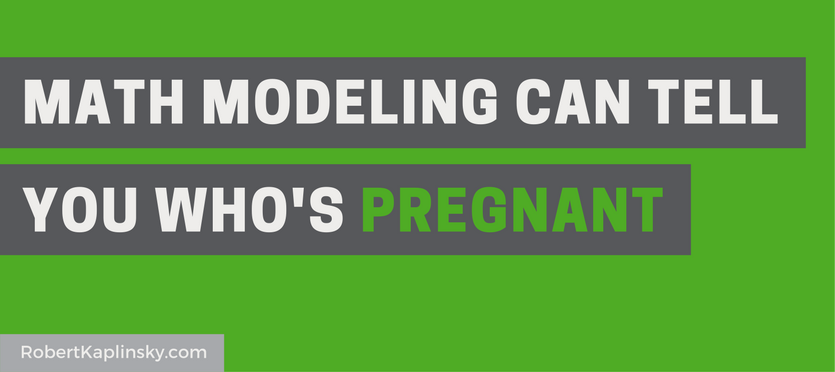[This is one of a series of posts that explore real world examples of mathematical modeling to help educators better understand its applications. This is not intended to be a context for a student lesson. To learn about Spies and Analysts, I recommend watching this webinar (with elementary, middle, and high school versions) or reading this blog post.]
I believe that there is still a lot of uncertainty about what exactly math modeling is. So, I want to share a humorous (and perhaps scary) story about how Target knew a 17-year-old girl was pregnant before the girl’s father did.
I’d read the article if you have time, but the summary is that Target (like most retailers) uses data about what you purchase to make predictions about what you’ll purchase in the future:
One Target employee I spoke to provided a hypothetical example. Take a fictional Target shopper named Jenny Ward, who is 23, lives in Atlanta and in March bought cocoa-butter lotion, a purse large enough to double as a diaper bag, zinc and magnesium supplements and a bright blue rug. There’s, say, an 87 percent chance that she’s pregnant and that her delivery date is sometime in late August.
Based on this information, Target then can send coupons to this customer to encourage her to shop at their store. It then goes on to talk about how this actually happened to someone:
“My daughter got this in the mail!” he said. “She’s still in high school, and you’re sending her coupons for baby clothes and cribs? Are you trying to encourage her to get pregnant?”
The manager didn’t have any idea what the man was talking about. He looked at the mailer. Sure enough, it was addressed to the man’s daughter and contained advertisements for maternity clothing, nursery furniture and pictures of smiling infants. The manager apologized and then called a few days later to apologize again.
On the phone, though, the father was somewhat abashed. “I had a talk with my daughter,” he said. “It turns out there’s been some activities in my house I haven’t been completely aware of. She’s due in August. I owe you an apology.”
So, let’s take a step back and think about this from the mathematical modeling perspective. There are two really important points:
- Retailers have access to rich data
- Data by itself is useless if you don’t know what to do with it
I want you to reflect on these those two points because they’re not trivial.
Here’s another example for you. Think about being a Target data scientist who has access to all that data. One day you are asked to come up with a formula to predict, say, who is likely to go on a trip to warm weather location so that Target can send them coupons for bathing suits and sunscreen. What information would you look at? How would you value it to avoid false positives? Is this even possible?!
While that may seem obvious, realize that this is often what happens in textbook. Instead of truly doing mathematical modeling, problem writers will focus solely on a context being real world and will sometimes even provide the formula.
So, now that you know what to look for, let’s give students as many opportunities as possible to do mathematical modeling. Here are over 70 free problems you can get started with.
Please let me know in the comments if you have any fun stories to explain what mathematical modeling is.


Hi Robert,
I was thinking about this the other day as we headed into March break. I was thinking wouldn’t it be fun to give students this task: Does the saying “March comes in like a lion and out like a lamb” actual hold true? How can you prove or disprove that saying? I feel this type of task supports what you are trying to share with us. Students need to do the thinking, what do we need to solve this problem, how are we going to model it! Thanks for sharing I really enjoyed this post.
Interesting Mark. What would you want your spies to look for? What would your analysts do with it?